Does It Snow in Vietnam? Where and When to May Experience It
Vietnam, a stunning Southeast Asian country known for its lush landscapes, pristine beaches, and vibrant culture, often sparks curiosity about its weather: Does it snow in Vietnam? Surprisingly, snow does fall in Vietnam, but only in a few specific high-altitude regions in the north and it doesn’t snow occasionally in Vietnam.
If you’re intrigued by the rare chance to see snow in Vietnam, read on to discover where and when to may experience this unique phenomenon!
Does It Snow in Vietnam?
While many assume that Vietnam’s tropical climate makes snowfall impossible, this is actually a misconception. Yes, in certain northern mountainous areas, such as Sapa and Ha Giang Province, winter temperatures can drop below freezing, occasionally bringing snow and frost. However, in most parts of Vietnam – especially the southern regions – snow is unheard of, as the warm climate remains dominant year-round.
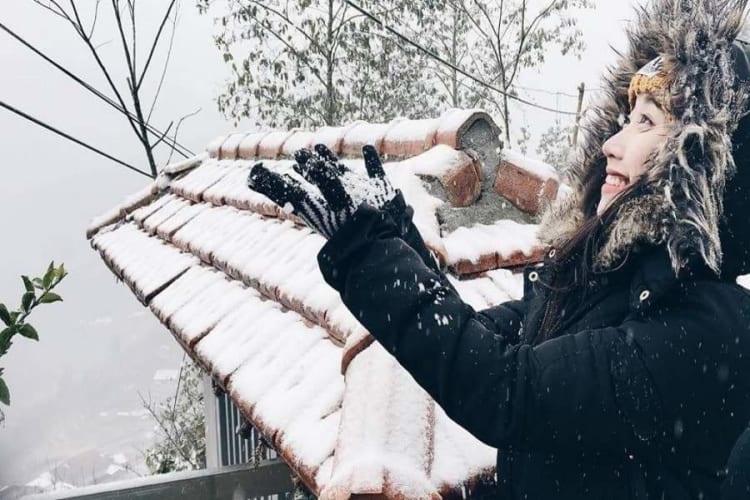
Does it snow in Vietnam (Image Source: Internet)
The Weather in Vietnam and Why Snow Falls
Given Vietnam’s tropical climate, snowfall is a rare sight. However, there are specific regions where this phenomenon occurs. Let’s explore the reasons behind this unique occurrence:
- Northern Vietnam: Winters in the north (including Hanoi, Sapa, and Ha Giang) are cool to cold, with average temperatures ranging from 10–20°C (50–68°F). During cold spells, temperatures in mountainous areas can drop below freezing, making snowfall possible.
- Central Vietnam: This region experiences mild winters, with temperatures ranging from 18–25°C (64–77°F). That is why we could not witness snow here.
- Southern Vietnam: The south is warm and tropical year-round, with temperatures between 25–35°C (77–95°F). Snow is impossible in this region.
Where Does It Probably Snow in Vietnam?
Snowfall in Vietnam is limited to specific mountainous areas in the north, typically at altitudes above 1,500 meters. Here are the top locations where you can see snow:
Sapa, Lao Cai Province
One of the best places to visit in Vietnam, Sapa instantly comes to mind of any traveler loving the cold weather when it comes to snow in Vietnam. Nestled at an altitude of 1,500-1,600 meters, this picturesque town is renowned for its cool climate, stunning terraced rice fields, and, of course, the chance to experience snowfall, making it the most famous destination in Vietnam for this unique phenomenon. Moreover, visitors can trek to nearby villages like Ta Van and Cat Cat for stunning views of the snowy scenery.
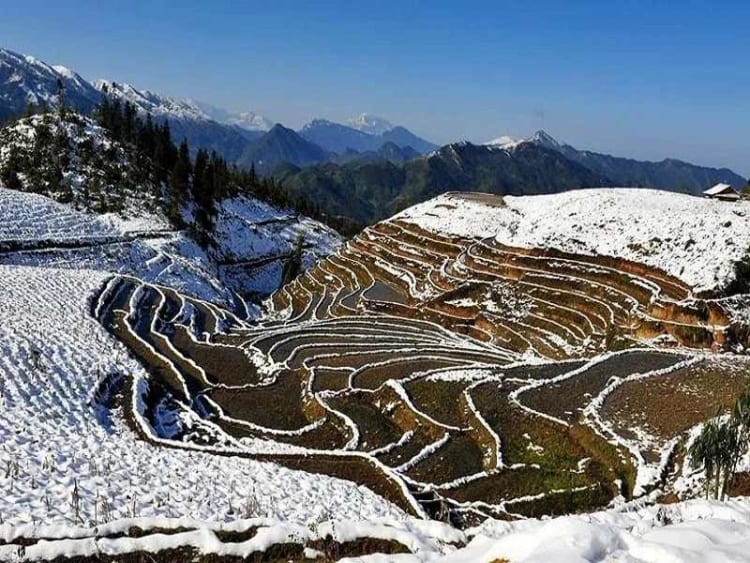
Sapa Vietnam in winter charm (Image Source: Internet)
Fansipan Mountain
Did you know that Fansipan Mountain, also called “The Roof of Indochina”, is the tallest peak in Vietnam at 3,147 meters above sea level? Due to its high altitude, Fansipan is one of the most likely places in Vietnam to experience snow during the winter months. You just have to take a Fansipan cable car to reach the summit and enjoy the snowy view.

Visitors conquering successfully the Fansipan peak (Image Source: Internet)
Mau Son Mountain
Located near the Chinese border, Mau Son Mountain is another high-altitude area known for its rare snowfall. During extremely cold winters, this mountain, at an elevation of around 1,500 meters, can experience light snow or frost. Mau Son Mountain is less crowded in comparison to Sapa, offering a quieter experience.
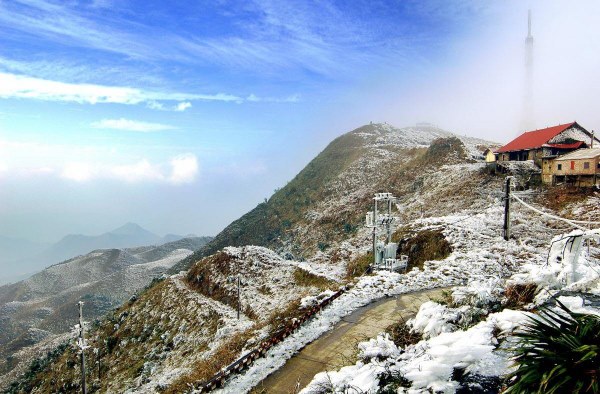
Mau Son Mountain is an ideal place to witness in Vietnam (Image Source: Internet)
Y Ty, Lao Cai Province
Y Ty is a remote commune in Lào Cai Province, situated at an altitude of around 2,000 meters. Snowfall is rare but possible during strong cold spells. Frost and mist are more common, creating a mystical, wintery atmosphere.
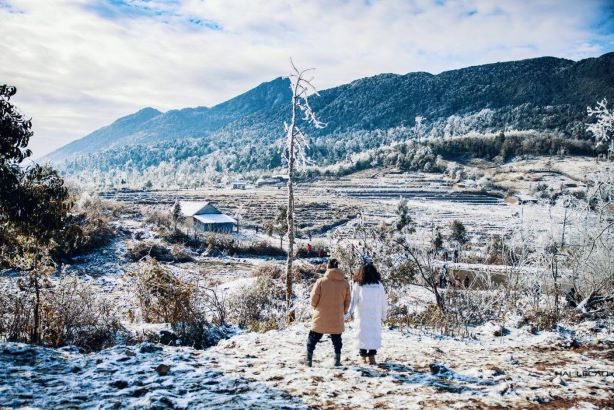
Snow in Y Ty, Lao Cai (Image Source: Internet)
Dong Van, Ha Giang
This UNESCO-recognized global geopark in Ha Giang Province, Dong Van Karst Plateau, is known for its dramatic limestone karsts and high-altitude terrain. Light snow or frost is possible in the highest areas of Dồong Van during severe cold waves. Even without snow, the region’s rugged beauty, winding mountain roads, and ethnic culture make it a must-see destination.
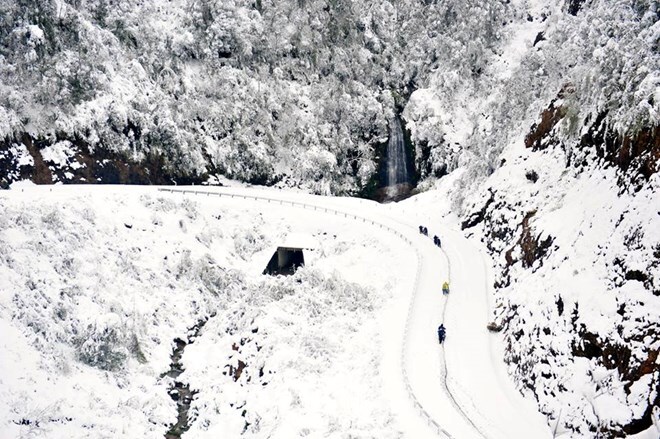
Snow falls white in Dong Van (Image Source: Internet)
FAQs About Snow in Vietnam
Does it snow in Hanoi?
Obviously, it does not snow in Hanoi. Although the city can get quite cold in winter, with temperatures as low as 10°C (50°F), it is not high enough in elevation to experience snow.
What are the best months to may see snow in Vietnam?
The best months for snow are typically December, January, and February, with January being the peak time for cold weather. Snowfall is most likely during strong cold waves coming from China.
How cold does it get in Sa Pa?
During winter, Sa Pa’s temperatures range from 0°C to 10°C (32°F to 50°F). On particularly cold days, temperatures can drop below freezing, leading to frost or snow. Don’t forget to bring suitable clothes in Sapa at that time!
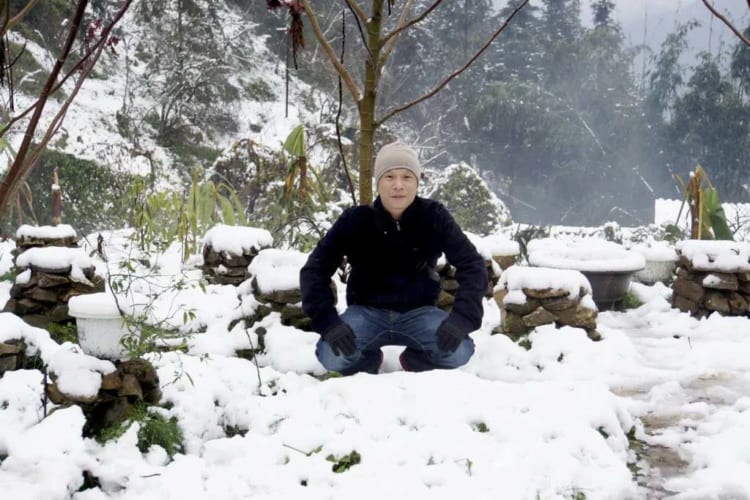
Wear suitable clothing in Sapa in winter time (Image Source: Internet)
Conclusion
While snow is rare in Vietnam, it does happen in high-altitude regions like Sapa, Fansipan Mountain, Mau Son Mountain, Y Ty, and Dong Van Karst Plateau during the winter months of certain years. Travelers hoping to witness this unique phenomenon should plan their trips between December and February and focus on northern Vietnam’s mountainous areas.
So, does it snow in Vietnam? Yes, it does – but only in a few places and only during the coldest months. Whether you’re a snow enthusiast or just curious, visiting these destinations can provide you with an unforgettable experience of winter charm in your Vietnam trip.

